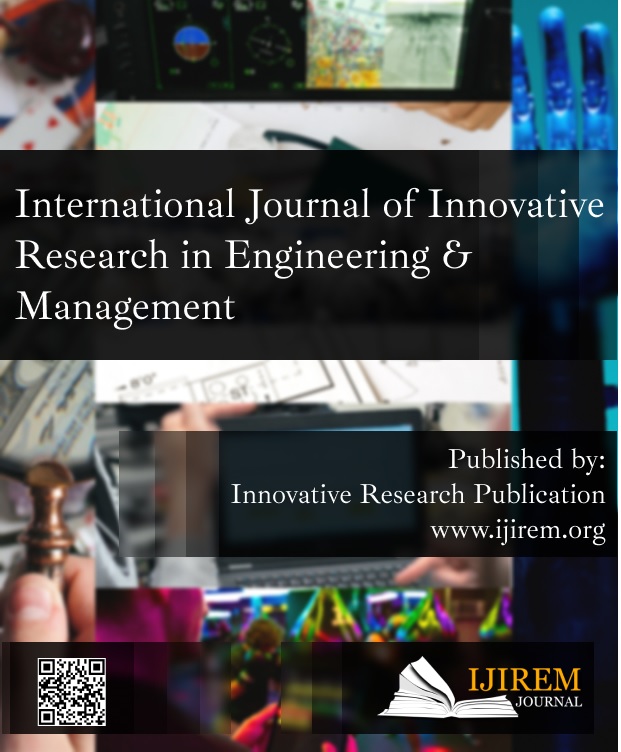Stagflation in World Economy-Impact on Indian Consumer Market
Keywords:
Consumer, Economic Growth, Inflation, Market, StagflationAbstract
Stagflation decimated the global economy throughout the 1970s and early 1980s. Recent empirical analysis suggests that the 1973 and 1979 oil crises were the catalysts for these high stagflationary periods. Other issues, such as whether stagflation is still a concern in the global economy, remain unresolved. Other than the price of oil, several factors contribute to stagflation. Humans can see that economies are susceptible to stagflation in a variety of ways using these measurements. Furthermore, even though stagflationary events occurred regularly between 1970 and 2010, the level of stagflation in the global economy tends to change over time. On the other hand, if stagflation develops, the magnitude increases. Our findings imply that stagflation is caused by a complex combination of factors and that oil price hikes' traditionally large influence has decreased in the 2000s. Surprisingly, we found evidence that this impact has grown again at the sample's conclusion. Today's stagflation, on the other hand, is mostly driven by increasing interest rates and declining worker productivity. The main objective of this paper is learn more about Stagflation in World Economy-Impact on Indian Consumer Market. In the future, the problem is clear since people have been used to comparing productivity growth year over year or in shorter periods, typically using aggregates gross national product.
Downloads
References
K. Zargar and S. Singla, “Impact of pet plastic waste on mechanical properties of mix concrete design,” Int. J. Sci. Technol. Res., 2020.
D. Pathak, R. P. Singh, S. Gaur, and V. Balu, “Experimental investigation of effects of welding current and electrode angle on tensile strength of shielded metal arc welded low carbon steel plates,” 2019, doi: 10.1016/j.matpr.2020.01.146.
R. Sharma and R. Chander, “Test OfWeak Form Efficiency In The Indian Stock Market,” Indian J. Financ., 2010.
“What is stagflation? The economic phenomenon that stifled growth through the 1970s.”
V. J. Kumar, O. P. Sati, and R. Singh, “A potential natural tablet binder from Grewia optiva,” Der Pharm. Lett., 2011.
V. Bhatnagar, J. Ranjan, and R. Singh, “Analytical customer relationship management in insurance industry using data mining: A case study of Indian insurance company,” Int. J. Netw. Virtual Organ., 2011, doi: 10.1504/IJNVO.2011.043803.
S. K. Mangla et al., “A framework to assess the challenges to food safety initiatives in an emerging economy,” J. Clean. Prod., 2021, doi: 10.1016/j.jclepro.2020.124709.
D. P. Singh, S. K. Deivedi, S. R. Hashim, and R. G. Singhal, “Synthesis and antimicrobial activity of some new quinoxaline derivatives,” Pharmaceuticals, 2010, doi: 10.3390/ph3082416.
M. Dadhich, M. S. Pahwa, V. Jain, and R. Doshi, “Predictive Models for Stock Market Index Using Stochastic Time Series ARIMA Modeling in Emerging Economy,” 2021, doi: 10.1007/978-981-16-0942-8_26.
“Stagflation - not coming to an economy near you.”
S. Africa, “Risks of Stagflation in the European Economy in,” 2013.
R. CHRIST, “Desenvolvimento de compósitos cimentícios avançados à base de pós-reativos com misturas híbridas de fibras e reduzido impacto ambiental,” Uniserisidade do Rio Sinos - UNISINOS, 2014.
K. R. A. J. Kumawat and R. Moolchandani, “Global Financial Crisis and Impact Assessment on Service Sector,” vol. 8, no. 1, 2015.
M. Zainab and S. Neha, “Gold and Investor ’ s Perspective in Different Market Conditions,” vol. 12, no. 1, pp. 85–87, 2019.
P. Parikh and A. Vaish, “Gold and Investor’s Perspective in Different Market Conditions,” Glob. J. Manag. Bus. Stud., vol. 3, no. 8, pp. 825–834, 2013.
S. K. Raval and P. S. Kamble, “Global Recession and its impact on the Indian Economy,” Indian Streams Res. J., vol. 1, no. 7, 2011.
A. Gamble, “British politics and the financial crisis,” Br. Polit., vol. 4, no. 4, pp. 450–462, 2009, doi: 10.1057/bp.2009.25.
